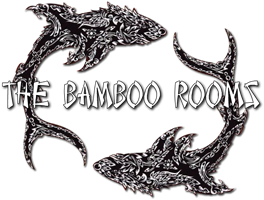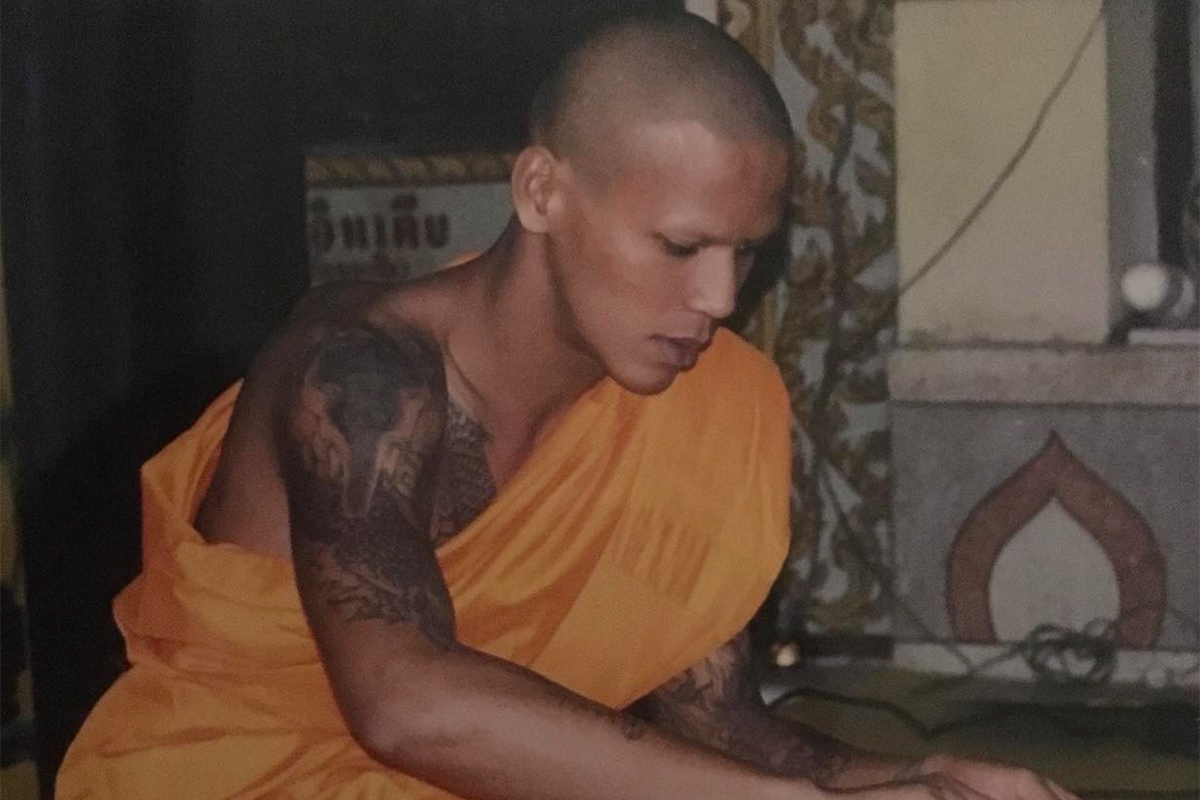Sak Yant tattoos, also known as “Yantra tattoos,” are a traditional form of body art originating from Southeast Asia, particularly Thailand, Cambodia, and Laos. These tattoos are deeply spiritual, often imbued with Buddhist prayers, sacred geometry, and symbolic images believed to offer protection, power, and good fortune. While Sak Yant tattoos are gaining global recognition, their roots are steeped in centuries-old traditions, and the process of receiving a Sak Yant tattoo is often as significant as the tattoo itself. Central to this process are the figures of the monk, the Ajarn, and the tattoo artist, each playing distinct roles in the Sak Yant tradition. To fully appreciate the depth of Sak Yant, it’s essential to understand the unique contributions of each of these figures.
The Monk: Spiritual Custodian of Sak Yant
Monks in the Theravada Buddhist tradition are revered as the spiritual custodians of Sak Yant. Historically, the practice of tattooing sacred yantras (geometric designs) on the body was a responsibility carried out within the temple (wat). Monks, as ordained members of the Sangha, are considered to have the spiritual authority to inscribe these sacred symbols on the bodies of believers. The process is highly ritualistic, often beginning with the devotee making merit, offering food, flowers, incense, and sometimes money to the monk as a form of respect and in hopes of receiving blessings.
Monks are believed to channel the divine power necessary for the Sak Yant to be effective. The mantras (katas) that accompany the tattooing process are often chanted by the monk as he tattoos and are believed to invoke protective spirits or deities. The tattooing itself is a meditative process, with the monk often entering a deep state of focus to ensure that the spiritual energy is correctly transferred to the wearer.
However, it is important to note that not all monks perform Sak Yant tattoos. The practice is becoming less common within monastic settings, partly due to modern interpretations of monastic rules, which sometimes discourage monks from engaging in practices that involve physical contact or the use of tools associated with bodily harm, such as needles. This shift has led to a greater prominence of Ajarns and lay tattoo artists in the Sak Yant tradition.
The Ajarn: Master of the Esoteric
The term “Ajarn” (also spelled “Ajaan” or “Acharn”) refers to a master or teacher in the Thai language. In the context of Sak Yant, an Ajarn is often a former monk who has left the monastic life but continues to practice the spiritual and esoteric arts learned during their time in the temple. Ajarns are highly respected figures who possess deep knowledge of Buddhist scriptures, Pali language, astrology, and the mystical arts, all of which are integral to the practice of Sak Yant.
Ajarns serve as intermediaries between the spiritual and physical worlds. They are believed to have the ability to invoke the powers of various deities, spirits, and cosmic forces through the Sak Yant tattoos. Unlike monks, Ajarns are not bound by the strict codes of monastic discipline, allowing them greater flexibility in their practice. This includes the ability to create and innovate new designs and rituals that may not strictly adhere to traditional Buddhist principles but are nonetheless potent in their spiritual significance.
One of the key aspects of receiving a Sak Yant from an Ajarn is the personal relationship that often develops between the master and the disciple. Ajarns often serve as spiritual guides, offering advice and blessings beyond the tattooing process. The tattoo is seen not merely as a physical mark but as a living embodiment of the disciple’s spiritual journey, with the Ajarn playing a crucial role in shaping and guiding that journey.
The Tattoo Artist: Bridging Tradition and Modernity
In recent years, the practice of Sak Yant tattooing has expanded beyond temples and the confines of traditional Ajarns into more conventional tattoo studios. Here, the role of the tattoo artist emerges, distinct from the monk or Ajarn but still connected to the Sak Yant tradition. Many tattoo artists specializing in Sak Yant are often lay practitioners who have studied Sak Yants and learned the hand poked tattoo method associated with Sak Yants under Ajarns or monks, often learning the basics of the sacred designs, mantras, and the spiritual significance behind them.
Tattoo artists bring a unique dimension to the Sak Yant tradition by blending ancient practices with contemporary tattooing techniques. Whilst most Sak Yant tattoo artists adhere to the traditional bamboo method (known as “hand-poking” or “sak mai”), some tattoo artists today use modern tattoo machines. This modernization has made Sak Yant tattoos more accessible to a global audience, particularly those who may not have the opportunity to visit a temple or seek out an Ajarn in Thailand.
However, this shift has also led to debates within the Sak Yant community about authenticity and the preservation of traditional practices. Some purists argue that the spiritual efficacy of a Sak Yant tattoo is diminished when performed outside of its traditional religious context, particularly if the artist does not adhere to the spiritual rituals that are integral to the process. Others believe that as long as the tattoo artist respects the sacredness of the designs and the spiritual intent behind them, Sak Yant can continue to evolve and remain relevant in the modern world.
Selecting the Right Practitioner for Your Sak Yant: Monks, Ajarns, or Traditional Tattoo Artists
When deciding who should perform your next Sak Yant, there are several crucial factors to consider:
- Spirituality: Everyone is on their own unique path toward enlightenment. If you feel uneasy about receiving a full Buddhist blessing or are currently unable to adhere to the traditional rules associated with a Sak Yant, opting for a tattoo artist instead of a monk or Ajarn is entirely acceptable. At The Bamboo Rooms, Ajarn Keng views the blessing as an optional component and deeply respects each individual’s spiritual journey. He is honored to create a Sak Yant for you, whether or not you are ready to include the blessing.
- Location: Finding skilled practitioners of Sak Yant can be challenging, especially monks, who are the rarest. Even within Thailand, you may need to travel, often to Bangkok, to find a monk who offers Sak Yant tattoos. For instance, there are no monks on Samui who perform these sacred tattoos.
- Gender: It’s important to note that monks are unable to tattoo females due to traditional restrictions.
- Method: The traditional method of creating a Sak Yant is by hand-poking, commonly known today as bamboo tattooing. It is traditionally performed by Thai, Cambodian or Lao practitioners who understand the intricate details of the script. However, such artists may not always be locally available, and travel might not be feasible meaning people may not always be able to choose an artist who fully understands the Sak Yant. If you have concerns about the accuracy of your Sak Yant, feel free to contact us for guidance.
- Health and Safety: This is perhaps the most critical factor as no tattoo is worth compromising your health. Unfortunately, many monks and Ajarns may not meet the rigorous health and safety standards that professional tattoo artists, particularly those located internationally, must adhere to. In Thailand, there is a growing trend among locals to choose tattoo artists for their Sak Yant due to increased awareness of health and safety practices. When selecting an artist, ensure they use new needles, fresh ink (avoiding the reuse of old ink by returning used ink to the bottle), and maintain a clean environment with easily disinfected surfaces. The artist should wear full gloves that are changed regularly, especially after breaks or contact with anything other than the tattooing equipment and client.
- Experience: Choose an artist with both extensive tattooing experience and specific expertise in Sak Yant. They should be able to explain the meaning and rules of the Sak Yant in detail. For bamboo tattooing, look for someone who can work proficiently with full gloves and without the need for a second person to hold the skin. Cutting fingers out of gloves to “feel” the bamboo or requiring an assistant to hold the skin are generally indicators of insufficient experience.
By considering these factors, you can make an informed decision and ensure a meaningful and safe Sak Yant experience.
I hope you enjoyed reading this and please feel free to contact me if you have any questions.
Ajarn Keng





